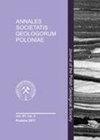Jelenia Góra地热系统(苏德斯,波兰)热水中锗的地球化学特征:溶质关系和含水层矿物学
IF 0.9
4区 地球科学
Q2 GEOLOGY
引用次数: 1
摘要
对Jelenia Góra地热系统中热水化学成分的长期(2004-2021)研究提供了一系列广泛成分的信息。本研究的主题是锗(Ge)的地球化学,锗在研究水域中的浓度范围为2.7至6.3 μ g/L。对46项化学分析的解释确定了个人摄入的热水中锗和其他元素之间的关系。在Cieplice和Karpniki深循环古热水中,锗主要来源于硅酸盐,其浓度受含锗石英溶解度控制,平均锗含量为1.5µg/g。Staniszów深层古热水中锗的主要来源是硫化物,最有可能是毒砂,但硅酸盐(黑云母、角闪石)对锗的二次贡献不可忽视。在这种水中控制Ge活性的矿物相还不能确定。Cieplice的浅层热水是旧热水和现代热水的混合物,与深水不同。浅水中的锗可能来源于硅酸盐,但由于混合,没有化学平衡条件;Ge的浓度由混合水组分的动态平衡决定。现代水的摄取量为:2 (Cieplice)不同于其他浅水,也与Staniszów水有相似之处。锗在no。2水可能主要来自氧化铁矿物(黑云母、角闪石),但不能排除硫化物的影响。锗与其他元素的关系,包括Ge/Si比值,似乎是水文地球化学条件的有效指标。不同地点的热水在化学成分上既有相似之处,也有差异,尤其是微量成分和微量成分。目前,对Jelenia Góra地热系统的认识尚处于薄弱阶段,可以将其视为一个局部系统的发生地,负责个人取水的热水的数量和质量。本文章由计算机程序翻译,如有差异,请以英文原文为准。
Geochemistry of germanium in thermal waters of the Jelenia Góra geothermal system (Sudetes, Poland): solute relationships and aquifer mineralogy
: A long-term (2004–2021) study of the chemical composition of thermal waters in the Jelenia Góra geothermal system provided information on a wide set of components. The subject of the present study is the geo - chemistry of germanium (Ge), which occurs in concentrations ranging from 2.7 to 6.3 µg/L in the waters studied. Interpretation of a set of 46 chemical analyses identified relationships between germanium and other elements in thermal waters from individual intakes. In the old thermal waters of Cieplice and Karpniki of deep circulation, germanium is derived from silicates and its concentration is controlled by the solubility of Ge-bearing quartz with an average Ge content of 1.5 µg/g. The source of germanium in the deep old thermal water at Staniszów is mainly sulphides, most likely arsenopyrite, but the secondary contribution of Ge from silicates (biotites, amphiboles) should not be ignored. The mineral phase, responsible for controlling Ge activity in this water, cannot yet be iden - tified. The shallow thermal waters at Cieplice, which are a mixture of old thermal waters and modern waters, differ from the deep waters. Germanium in shallow waters probably is derived from silicates, but ow - ing to mixing, there are no chemical equilibrium conditions; the concentration of Ge is determined by the dynamic equilibrium of the mixed water components. The modern water of intake no. 2 (Cieplice) differs from other shallow waters and also shows similarities to the Staniszów water. The germanium in the no. 2 water probably comes mainly from ferromagnesian minerals (biotite, amphiboles), although the influence of sulphides cannot be excluded. The relationships of germanium to other elements, including the Ge/Si ratio, appear to be effective indicators of hydrogeochemical conditions. Thermal waters from the different locations show both similarities and differences in chemical composition, especially of minor and trace components. At the present, still weak stage of recognition, the Jelenia Góra geothermal system can be treated as an area of occurrence of local systems responsible for the quantity and quality of thermal waters in individual intakes.
求助全文
通过发布文献求助,成功后即可免费获取论文全文。
去求助
来源期刊
CiteScore
2.60
自引率
7.70%
发文量
6
审稿时长
>12 weeks
期刊介绍:
Annales Societatis Geologorum Poloniae (ASGP) is the scientific journal of the Polish Geological Society. Original contributions and review articles are considered for publication in Annales Societatis Geologorum Poloniae. Submissions for publication may be from all branches of the geological sciences, including applied and economic geology, as well as discussions of papers, previously published in the journal. The language of the journal is English.

 求助内容:
求助内容: 应助结果提醒方式:
应助结果提醒方式:


